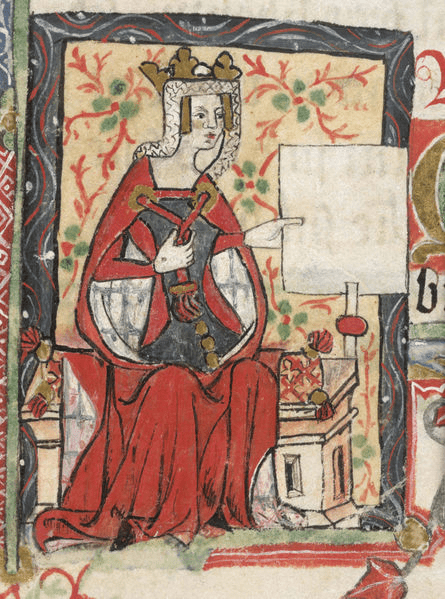69 years after the Norman Conquest, England was in again in crisis. This time it was because a woman had been left the throne of England, and England’s nobles were not happy with the concept of the unprecedented rule of a woman. Matilda (1102-1167 C.E.) was the daughter of Henry I of England and Matilda of Scotland. While her father had over 20 illegitimate children with multiple mistresses, he only have two legitimate children: Matilda and her younger brother, William Adelin. The shocking and early death of Matilda’s brother created a succession crisis and a civil war that spanned two decades known as ‘The Anarchy’.
Matilda moved to Germany as a child to marry Henry V, the Holy Roman Emperor. He was much older, being 24 when he was formally betrothed to the 8 year-old Matilda, though they married several years later. Despite the age difference, it seems Henry allowed Matilda to take an active part in government, and trusted her with regency in Italy for two years while he was elsewhere in the empire. Sadly for Matilda, Henry died in 1125, leaving Matilda alone, childless, and away from her country of birth. She had no ties and didn’t want to rely on her husband’s family to decide her future, so she moved back to England.
It was a particularly timely move, as England was suffering a succession crisis. Matilda’s younger brother William had just died, and she was Henry I’s only surviving legitimate child. Henry had remarried, but the marriage was childless and Henry had to seriously consider who was going to succeed him. He forced his nobles to swear allegiance to honour the succession of Matilda, whilst favouring his nephew Stephen of Blois at court – creating mixed messages. He then married Matilda to Geoffrey of Anjou. Not only was he much younger than Matilda, but Anjou was an enemy of Normandy. Many nobles who held land in both Normandy and England were alarmed by this move.
When Henry died in 1135, Matilda was recovering from childbirth in Anjou, leaving the throne vulnerable for the taking. Rumours abounded that Henry had changed his mind on his deathbed and left the throne to Stephen; this was probably a tactic by Stephen’s supporters to make his seizure of the throne seem more legitimate, and it succeeded initially. Stephen was crowned within the month.
When Matilda recovered she launched an attack on Stephen which would start the beginning of a long and bloody civil war. There was times over the years where Matilda held the upper hand but she soon lost it again. She captured Stephen during the Battle of Lincoln in 1141, but when her biggest ally, half-brother Robert of Gloucester, was captured in Winchester later in the year, Matilda was forced to trade Stephen. While Stephen tended to dominate in England, Matilda had more success in Normandy. Towards the end of the civil war both sides were reluctant to fight, as neither side seemed to make much ground. The solution came when Stephen’s eldest son Eustace died, and an agreement was made that Matilda’s son Henry would be Stephen’s heir. A year later Stephen died, and Henry was crowned Henry II.
Near the end of the civil war Matilda had passed the mantle onto her eldest son. Though she never succeeded in becoming queen, her efforts showed how strong female rulers could be. She also prevented Stephen from being comfortable as King. Her efforts meant the throne was passed to her son, who ended up ruling an empire stretching from the border of Scotland to the Pyrenees. She left a powerful legacy, when she died her son, Henry wrote her epitaph:
‘Here lies Henry’s daughter, wife and mother; great by birth, greater by marriage but greatest by motherhood’.

